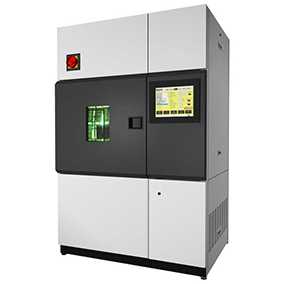Site: Home > Home > News and events
The aging of materials has always been a concern, and in daily life, the aging of polymer materials is a common phenomenon. The aging of polymer materials, including plastics, rubber, fibers, coatings, etc., mainly refers to the processing, storage or use of materials, due to the impact of heat, light, oxygen, mechanical stress, ozone, harmful metal ions, radiation and other external factors, so that the internal physical or chemical changes in the material, performance deterioration, and gradually lose the use of value of the phenomenon. Generally speaking, aging is a process in which the performance of the material changes from good to bad.
Due to the different varieties of materials, the differences in the use of conditions, and therefore the aging characteristics of the material aging is not the same. Polymer material aging phenomenon is summarized in the following aspects:
1. Changes in appearance, such as material discoloration, hardening, softening, cracking, etc.;
2. Changes in physical and chemical properties, such as thermal conductivity, molar mass, solubility, etc;
3. Changes in mechanical properties, such as hardness, tensile strength, impact strength, etc;
4. changes in electrical properties, such as dielectric constant, dielectric loss, breakdown voltage, etc.
Laboratory light source accelerated aging test is an aging test method commonly used in plastic aging test, it is suitable for long-term exposure to daylight or daylight through the window glass of indoor and outdoor use of plastic, the use of xenon lamp aging tester to test a more comprehensive consideration of light, oxygen, heat, humidity and rainfall on the appearance and performance of plastic. The xenon arc lamp has the most similar spectral energy distribution to that of daylight, and is therefore widely used in the aging test of plastics.
For products with complex shapes and difficult to make standard specimens, usually, often to check the appearance of the specimen (chalking, discoloration, color difference, etc.), so the sample should be cut in the same part as far as possible, one of the specimens left as the original comparison sample, the other specimens used for xenon lamp aging test. When the specimen is placed, the product should be made in the actual conditions of use of the exposure surface facing the xenon lamp light source.
Sheet, film, plate and other products can be cut according to the test needs in accordance with the relevant standards for tensile, tearing and other samples to determine the changes in mechanical properties before and after aging, to evaluate the light aging performance of products. Simultaneous aging test of several different samples should be done on the backlight side of the specimen should not be eliminated markings, used to distinguish different samples.
The polyester-cotton fabric for travel tent is tested for changes in tensile strength in the warp and weft directions after xenon aging, and the specimens are cut according to the tensile strength test method ISO 13939-1:1999, and the xenon aging conditions are set according to ISO 4892-2:2006: the irradiance of 340nm is 0.50W/m2, the black standard temperature is 65℃, the test chamber temperature is 38℃, the relative humidity is 50%, the use of daylight-type filters, spraying cycle of 102min dry / 18min spraying water, light time of 360h.

For indoor use of plastic products exposed to daylight through the window glass, xenon lamp light source must be filtered to reduce the wavelength of 320nm below the spectral irradiance to simulate daylight through the window glass after filtering, automotive interior parts in addition to assume the function of vibration damping, heat insulation, sound absorption, etc., in the long-term use of the process of changes in appearance will affect the beauty and image of the car.
The xenon lamp aging test simulating daylight through the window glass is conducted on the interior parts of the car to observe the changes in their appearance, which can provide a test basis for the selection of materials for the interior parts. The test conditions were as follows: 340nm irradiance of 0.50W/m2, black standard temperature of 63℃, relative humidity of 50%, window glass type filter, continuous light without spray, and light time of 400h. The xenon lamp aging test chamber was used. According to GB/T 250 compare the sample before and after aging, the sample after aging is slightly discolored and the color change grade is 4-5 (color change grade: 1 grade a sample completely discolored; 5 grade a sample completely not discolored).
A weathering PP material is molded into standard specimens in accordance with the relevant ASTM standards and tested for tensile strength, elongation at break, notched impact strength and color difference before and after aging, and its appearance is rated for discoloration. The test conditions of the xenon lamp aging tester are as follows: 340nm irradiance of 0.50W/m2, black standard temperature of 65 ℃, relative humidity of 65%, continuous light, water spraying cycle of 18h/102min (spraying time/no spraying time), test time of 2000h.
The weathering of materials using xenon aging tester is a common test method to simulate the use of direct sunlight or through the window glass exposed to sunlight, we can choose products or materials in the actual use of the performance of the test, for the research, development, use of plastic materials and supply and demand side to provide reliable test data.
Copyright 2022:Qinsun Instruments Co., Limited
High-end textile tester supplier Email:info@qinsun-lab.com | Textile Testing Equipment pdf | Tel:021-67800179 |